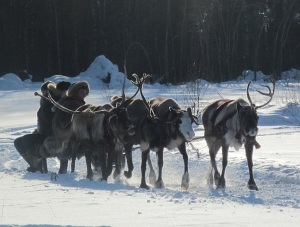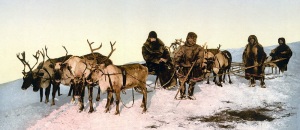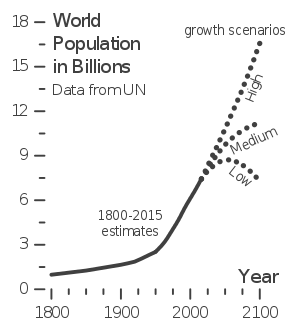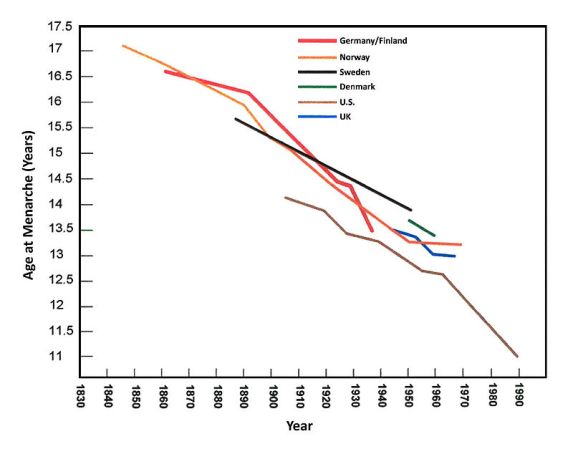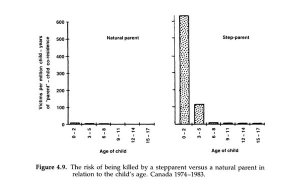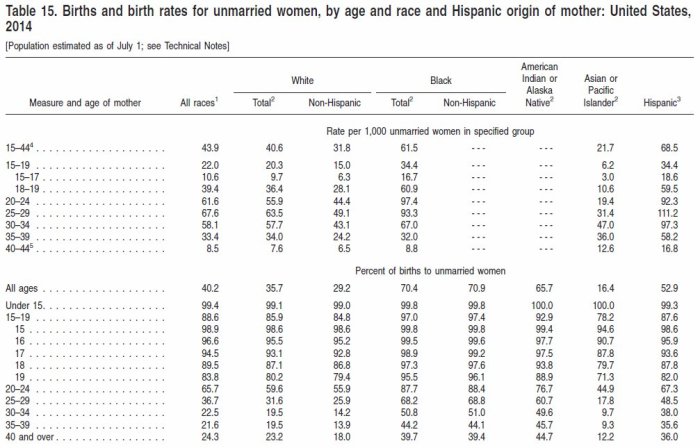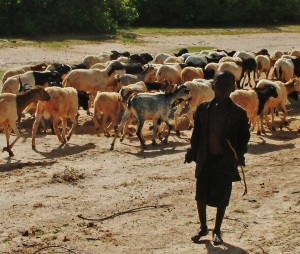Sometimes material for these posts falls serendipitously into my lap–such is today’s case: I have inherited from a great-grandparent in the Puritan line of the family a slim volume from 1917, Hermann Hagedorn’s You are the Hope of the World: An Appeal to the Boys and Girls of America, and oh boy, is it a doozy.
Since I’m dong a lot of quoting, I’ll be using “” instead of blockquotes for readability.
“YOU ARE THE HOPE OF THE WORLD! Girls and boys of America, you are the hope of the world! In Europe, boys of your age are dying daily by hundreds, by thousands! Millions lie dead or wounded; or, fam- ishing in prison camps, watch the slow wasting of body and mind. Millions! Can you imagine it? Five million! Ten million! God knows, how many million more! Twelve million. Fifteen million, perhaps. It is an impossible figure — so huge that it means nothing. …
“Europe does not know yet what she has lost. Europe has great scientists still, great poets, great tellers of tales, inventors, merchants, physicians, preachers. But they are old, or aging. They will pass away, and Europe will look around and cry: “My old heroes are passing. It is time for my young heroes to take the places of honor.” And Europe will call for her young heroes. Europe will call for new poets, new tellers of tales, new scientists, new inventors, new merchants, new physicians, new preachers. And no one will answer. No young heroes will appear. …
“over there across the ocean every twenty seconds, on an average, down goes a brave boy, and out goes another can- dle, and on one of you over here suddenly falls a new responsibility. You don’t feel it, but there it is. That French boy or that English or German or Russian boy, may leave his watch- fob to his brother and his watch to his best friend, but he leaves his chance in life to you. He might have been a great scientist and drawn some wizardry, yet unknown, out of the air; he might have been a great musician, a great engineer; he might have been the immortal leader men have been looking for, ages long, to lead the world to a better civilization. He’s gone, dead at nineteen. Young America, you are his heir! Don’t you feel his mantle on your shoulders? …
[Says the young American:]””It makes me sort of sorry for Europe. Why, when the old duffers die, they’ll holler for new men and —”
“”There won’t be any new men.”
“”They’ll get into a scrape — perhaps another war like this — and they’ll holler for a Washington or a Lincoln, or even for a What’s-his-name? — Joffre — or a What’s-his- name — Lloyd George — to pull ’em out, and there won’t —”
“”There won’t be any Washington or Lincoln or Joffre or Lloyd George.”
“”Who’ll there be?”
“”Perhaps nobody — in Europe.”
You sit a minute, Young America, thinking that over. And then suddenly you rise to your feet, and throw away your cigarette, and frown, puzzled a bit. And then very slowly you say:
“”Why, it looks as though when that time comes — perhaps — it may — be — up to us.” Right you are, Young America!”
[EvX: Note that Hermann is predicting that in the event of another World War, Europe will not be able to produce for itself the likes of Churchill or Hitler.]
“Why, you say, are we the world’s hope? … You can’t evade it, Young America. The stars have conspired against you. Destiny, which made your country rich and gave her great leaders in time of need, and helped her to build a magnificent republic out of many races and many creeds; Destiny that brought you to the light under the Eagle and the Stars and Stripes; Destiny, that chose America to be the greatest laboratory, the greatest testing-ground of democracy in the world; Destiny, Fortune, God, whatever you want to call laid on you the privilege and the responsibility of being the hope of a world in tears. You can carry this responsibility and be glorious. You can throw it off, and be damned. But you cannot ignore it. …
“The world knows that in you, whether your ancestors came over in the Mayflower three hundred years ago, or in the steerage of a liner twenty years ago, lives the spirit of a great tradition. The world puts its hope in you, but not only in you. It puts its hope in the great ghosts that stand behind you, upholding your arms, whispering wisdom to you, patience, perseverance, courage, crying, “Go on, Young America! We back you up!” Washington, first of all! And around him, Putnam, Warren, Hancock, Samuel Adams, John Adams, Hamilton, Jeffer- son, Marshall, Greene, Stark!
[EvX: There follows a long enumeration of American heroes–let us note that at this time, Americans still had heroes and Yale’s students were not “angry, saddened and deeply frustrated” by the University’s decision to name a dormitory after Benjamin Franklin.]
“You remember what the British officer said of Marion’s band? “They go without pay, they go without clothes, living on roots and drinking water — all for liberty. What chance have we against such men?” …
“All Europe paid tribute to pirates in Barbary, and America paid tribute, because everybody was doing it; it seemed to be the style. But then some Bashaw in Tripoli or Tunis, seeing easy money, jacked up his price. And Europe said: “Oh, all right. If you’ll only keep quiet!” But the little U.S. cried: “No, you dirty pirate! We’re hanged if we’ll pay you another cent!” And the ships went over, gallant ships with all sails full, and there was no more tribute-paying after they came back! …
“Rogers and Clark are behind you, Fremont, Daniel Boone, Kit Carson, Sam Houston, Davy Crockett. You remember? “Thermopylae had its messengers of death, the Alamo had none.” The frontiersmen, the Indian fighters, the pioneers are behind you, dauntless of spirit; the colonists of Virginia, Massachusetts, Connecticut, the New Netherlands, the Carolinas; the settlers in wild lands, pressing westward … the brave builders of the West are behind you, … John Brown of Osawatomie is there! And there, Sherman, Sheridan, Meade, Thomas, Farragut, Grant, silent, tenacious, magnanimous! Stonewall Jackson, Stuart, Lee! And in the midst of them, the greatest of all, Lincoln, with his hand on your shoulder, Young America, saying, “Sonny, I’m with you. Go on!” …
“[WWI] has to many of you, perhaps, seemed merely a brawl in the dark among thieves, or a midnight riot in a madhouse. The issues have been confused. … Because the Right was hard to catch and hold, we cried that there was no Right in it. That was the comfortable point of view. …
“As the months went by, one truth began to emerge with increasing clearness from the smoke and welter and confusion. We saw, dimly at first, then more and more clearly, that the War was not merely a war between competing traders, a war for a place in the sun on the one side, and economic supremacy on the other; but a war of conflicting fundamental ideas. We were slow to see this. It took a revolution in Russia to open our eyes; it took the joyous shout of the countless Siberian exiles, welcoming freedom, to open our ears. But we understand now. We know at last what the war is about. We see at last what the Allies have seen from the beginning, that this is a war between kings and free men. The nations that believe in kings and distrust the people have challenged, with intent to destroy, or incapacitate, the nations that believe in the people and won’t let the kings out in public without a license, a muzzle and a line. It is a war between autocracy and democracy, and beyond that, it is a struggle for the extirpation of war; a struggle between the powers who believe that there is profit in war and the powers who know that there is no profit in it; between the powers who are looking back to a sort of earnest cave-man as an ideal, and the powers who are looking forward to a reasoning, reasonable, law-abiding man with a ballot.
[EvX: Note the many ways in which this is an absurd lie. Did the Kaiser of Germany and the Czar of Russia pitch their armies against each other because one of them was an autocrat and the other a democrat? Did the Communist Revolution in Russia result in freedom, liberty, or democracy for the people there, or mass famines, secret police, and gulags?]
“Blacker and sharper every day, against the lurid glow of flaming villages and smouldering cities, looms the Peril of Kings, and louder and grimmer from millions of graves rumbles the Doom of Kings. If there is any validity in human evidence, and if the logical conclusions of clear minds from clear-cut evidence mean anything at all, this Great War was begun by kings and sons of kings. It will not be ended by kings. It will be ended by folks named Smith and Jones and Robinson; and the kings and sons of kings thereafter will eat their meals through wire baskets, and there will be number-plates on their collars. Foolish dudes and silly women will keep them as pets. Out of this agony of death is coming “a new birth of freedom.”
[EvX: Again he is wrong, for the Russian Czars were not kept as pets (what?) but cruelly murdered shortly after this volume appeared, even poor little Alexei who had certainly never done another human a single ounce of wrong.]
“Young America, if in these days there is one thought emerging like a green island out of the turbulent sea of conflicting opinions, it is that civilization demands the spread of the democratic idea. Kings take to war as Congressmen take to Appropriation Bills. There is no question about that. Nothing in history is surer. … When kings wanted glory, they went and took it out of their neighbors; when they wanted gold, they made war and got it; … And when their people rebelled, they went to war for no reason at all, but just to quiet them down. A good many men died and a good many women became destitute in the course of those adventures, but kings have romance on their side and they have always made believe that they had God on their side, too. The Kaiser isn’t the first king who has chattered about Me und Gott. He is merely the last of a long, sad line of self-deluded frauds. Kings gain by war, and cliques of nobles or plutocrats gain by war; the Lords of Special Privilege thrive and grow fat on aggression.
“But the people do not thrive on it. Smith and Jones and Robinson do not gain by aggression. Uncle Sam might annex Cuba, Mexico, Canada, and South America to-morrow, and Smith and Jones and Robinson would gain nothing from it all. They would lose. For public attention would be so fixed on the romantic glitter of conquest that, hi its shadow, corruption would thrive as never before. Progress within the nation would cease while we pursued the treacherous will-o’-the-wisp of imperialism into distant marshes. Smith and Jones and Robinson know this, and where they control the government, there is not much talk of colonies and the White Man’s Burden. The governments that are controlled by Smith and Jones and Robinson, which means the Common People, are called democracies; and in so far as they are true democracies they are a force for the abolition of war.
[EvX: Were Hermann correct, the US would have never expanded past the territories of the original 13 Colonies, would have never conquered Texas, Mexico, Cuba, etc., and we would be much the poorer for all of this land we had obtained. Likewise, the US would not have entered WWI, WWII, Korea, Vietnam, Gulf War I, Gulf War II, etc., while those monarchies in the Middle East–like Saudi Arabia–would be out conquering their neighbors.
Of course, our author does protect his position with a “no true Scotsman” clause.]
“They have been called to die for their country, but you are called to live for your country. Those who die in the fight for democracy, die for more than their country; they die to build a lasting peace. You who live for the service of democracy, live for the service of more than your country. You live to build, out of the agony and the ashes, a better world than the sun has yet shone upon! …
“”Or put it another way. Somebody who tells you that everything isn’t all hunkydory with America is a bad American, eh?”
“”You bet. If Teacher tried to get off any knocks on Uncle Sam, I’d tell my father, and my father’d get her discharged.”
“”You’re off, sonny. And your father’s off. All you spread-eagle people, who think that the only way to be loyal to Uncle Sam is to pretend that he’s perfect as a cottonwool peach, are off. Your Uncle Sam isn’t perfect, sonny. In fact, he’s just about a hundred thousand miles from perfect.” …
“But the only way our U.S.A. ever will be good and great is for us all to look at ourselves, to look at our nation squarely and without blinking, and keep our minds alert lest we get into bad company and do things that George and Abraham might not like. But Teacher says, in effect: “No! Don’t look at your own faults. Look at the faults of others and forget your own. You’ll be much happier that way!” … Young America, there are times when I should like to see Teacher shot at sunrise in that empty lot down the block. For that sort of jabber is, in the first place, a lie. And in the second place, it’s a damned lie. And in the third place, it’s treason, for it makes you think there’s nothing for you to do. And that’s like putting a bomb under the Capitol. Young America, I know you don’t like to have me say that democracy isn’t a success. It sounds disloyal somehow. But it isn’t disloyal. It’s just trying to look at things squarely, and without blinking, … Democracy is n’t a success — yet. Government of the people, by the people, for the people, is n’t achieved — yet. Do you think it is? You remember what the Grand Old Fellows said in the Declaration: Men are “endowed by their Creator with certain unalienable Rights . . . Life, Liberty, and the pursuit of Happiness.” Look about you. Does it seem to you that the slums in your own city afford life, liberty, and the pursuit of happiness to the men and women and children, freezing and starving in winter, sweltering and starving in summer? Does it seem to you that the factories where children work eight, ten, twelve, fourteen hours a day help those children achieve those unalienable rights? …
“It is a mystery to me, Young America, why the great men, whose lives and heroic deeds make up the history of this Republic, should have permitted us, the nieces and nephews of Uncle Sam, to take democracy, to take the principle of popular government, as lightly, as carelessly, as we have taken it. Perhaps they lacked imagination to see what a republic, based as firmly as ours, might accomplish with an alert and conscientious citizenry; perhaps, like Lincoln, they were too busy with enormous problems, concrete and immediate, to do more than point out the direction of progress; perhaps they were just optimistic, trusting blissfully in the old convenient notion that, by means of some piece of divine jugglery, some light- fingered shifting of omelets under a hat, the voices of five, ten, fifteen mil- ion farmers, factory-hands, brokers, lawyers, clerks, longshoremen, saloon- keepers, Tammany Hall heelers, murderers, repeaters and Congressmen, became the Voice of God.
“Our great men have been loyal to the principle of democracy. … But few, if any, have hammered into our heads the simple truth that democracy is like religion… what definite thing do we ever do to keep alive that little sprig of democracy which is native in the heart of every American girl and boy? What do we do to feed it and tend it and water it? America depends for its life, its liberty, its happiness, on a wide-awake and conscientious citizen- ship; but what do we ever do to build up such a citizenship? …
“What school or college that you ever heard of has in its curriculum emphasized the prime importance of citizenship? I suppose they teach you some civics in your school, and I’ll bet you a dollar it’s drier than algebra. Perhaps they give you a dab at current events — mostly events, and mighty little, I’ll swear, about the current on which they float. For history, I suppose they give you the same accumulation of pleasant legends they gave me when I was fifteen or thereabouts. All about the glory, and nothing about the shame, the stupidity, the greed! As though you were a fool who did n’t know that no man and no country can be all good or all bad; but that both are a mixture of good and bad, and will be loved by their children even if they do make mistakes! …
“Every American boy becomes a hand in the great Factory of Public Welfare we call the United States, the day he is twenty-one. He knows he is going into that factory, and his elders know he is going into it, and they all know that his happiness and their own happiness may depend on his loyalty to the interests of that factory and his understanding of the machinery of that factory. You’d think they’d tell him some- thing beforehand about machinery in general, wouldn’t you? You’d think they’d prepare him a bit to be a good mechanic when his time came. The machinery is so fine and delicate, you’d think the Directors would insist on reducing to a minimum the risk of smashing it up.
“But they don’t…. These Directors go from school to school, and instead of scolding the school-teachers for failing to give you training in government-mechanics, they pat you on the back, Young America, and tell you to be good factory hands, nice factory hands, loyal factory hands; and that the Factory is the grandest factory in the world, and you ought to be glad that you belong to that particular factory, because it is a free factory, where every one can do exactly as he pleases. The Directors say a great many uplifting things, but do they take you to the machine and explain it to you, and stand over you until you know what makes it go? Oh, no! Nothing like that! They tell you that you are the greatest little mechanic in the world and then leave you to wreck the machine as thoroughly as your native common sense will permit. As for freedom — for the ignorant and the untrained there is no such thing as freedom. The ignorant and the untrained are slaves to their own inefficiency. Those only are free who know. Young America, girls and boys can be trained to the work of citizenship even as greenhorns can be trained to the use of machinery; trained in the home, trained in school, trained in college. And we must be trained, Young America, if this country is ever going to be the wise, the just, the humane force for progress in the world that we want it to be. …
I have gone about like Diogenes with a lantern, trying to find a man or boy who has seen or even heard of a school or college that tried deliberately, fearlessly, and thoroughly to train its girls and boys to be intelligent citizens. Colleges teach government and history, but the courses are optional. Nothing in their catalogues suggests that a patriotic citizen will apply himself to these subjects. Physics may be compulsory and Latin or German or French may be compulsory, for those constitute Culture; but never by any chance the subjects that constitute the background for good citizenship. … Do [teachers] bend over you with a blessing or a club and say: You’ll be a decent citizen, my son, or I’ll know the reason why!” — do they? You would think your school- masters had never heard of such a thing as citizenship.
[EvX: Note the contradiction between our author’s certainty that democracy must be explicitly taught in order to succeed, and his complaint that in the past 140 or so years of this country, no one has bothered to teach it, and yet we had not descended into autocracy.]
“You may be too young to die for democ- racy; but no girl or boy is ever too young to live for democracy! Your country is at war. You can- not go to the front. But, in the high- est sense, you are the true Home Guard. Are you going to do your part? In your nation’s critical hour, girls and boys of America, what are you going to do?…
“Unlike the college boy who prefers to stay away from baseball games, the citizen who prefers to stay away from the polls does not lose caste. No one has been taught to see him for the contemptible shirker that he is. For there is no tradition of public service. Young America, it is your opportunity and your obligation to create that tradition; … set forth and gather a friend or two friends or three friends about you and… determine that henceforth you will think about the needs of America, and argue about the needs of America, and give your hands and your hearts to serve the needs of America; and consider any man or woman, boy or girl, who does otherwise, a traitor to the United States and a traitor to the principle of democracy!…
“You must not only run ahead of your parsons and your schoolmasters, you must yourselves awake your parsons and your schoolmasters! Some of them are heavy sleepers, as you know. Bang on the door and drag them out of bed. Not too ceremoniously! Riot, if need be! There are too few riots in American schools and colleges against the cramping conservatism of the elder generation. …
“If your elders in school and college will not volunteer to lead you, lead yourselves, and demand their support! Speak gently to Teacher, speak persuasively to Teacher, but if words don’t wake him, RIOT, girls and boys of America! Do you call yourselves really Americans? Then jump to your feet, resolved that this great nation shall no longer waste its opportunities!
“Think what the republican hearts hidden behind the gray khaki of Germany would give for the democratic institutions you possess! Their lives would seem to them payment ridiculously inadequate. And you possess these institutions and shrug your shoulders and say, in effect, that you should worry what happens to them. Do you say that, you who read these lines? If you do, you are base, and deserve to die as Benedict Arnold died, in a garret in a foreign land, cursing the day that he betrayed his country! Does that sound harsh and violent to you, girls and boys of America? I tell you, the time has passed when we could afford to chatter lightly over the teacups concerning the needs and the shortcomings of our country. Smash the cups, Young America, and come out and fight, that government of the people, by the people, for the people shall not perish from the earth. Fight! …
Your elder brothers will have to fight with guns; many of them will have to die here or with their fellows-in-democracy in France and Flanders. … To you, girls and boys of ten, twelve, fourteen, fifteen, sixteen, seventeen, is given a work every bit as grand as dying for your country; and that is, living for the highest interests of your country! Those interests are the interests of democracy. If, therefore, you live for the highest interests of America, you live at the same time for the highest interests of the world. In that struggle, the goal is neither nationalism nor internationalism. It is democracy. It is a lasting peace among nations; and, as far as it is humanly possible, amity among men. Go to it! Go to it, girls and boys of America! You are the hope of the world.”
EvX: After completing the book (it is a short read and you may finish it yourself if you wish before continuing with this post,) I looked up the author’s biography on Wikipedia and managed to actually surprise myself by how thoroughly Cathedral Hagedorn was:
Hermann Hagedorn (18 July 1882 – 27 July 1964) was an American author, poet and biographer.
He was born in New York City and educated at Harvard University, where he was awarded the George B. Sohier Prize for literature, the University of Berlin, and Columbia University. From 1909 to 1911, he was an instructor in English at Harvard.
Hagedorn was a friend and biographer of Theodore Roosevelt. He also served as Secretary and Director of the Theodore Roosevelt Association from 1919 to 1957. Drawing upon his friendship with Roosevelt, Hagedorn was able to elicite the support of Roosevelt’s friends and associates’ personal recollections in his biography of TR which was first published in 1918 and then updated in 1922 and which is oriented toward children.
(Funny how Teddy Roosevelt has been nearly completely forgotten these days, compared to his fame back when Mount Rushmore was carved.)
